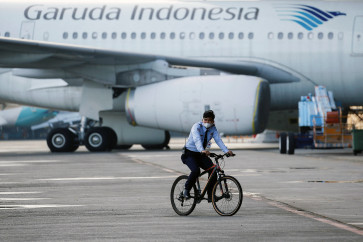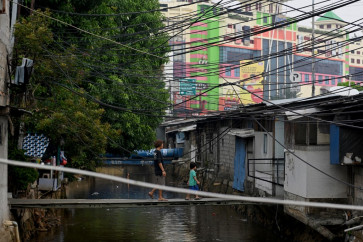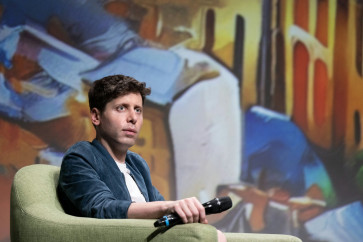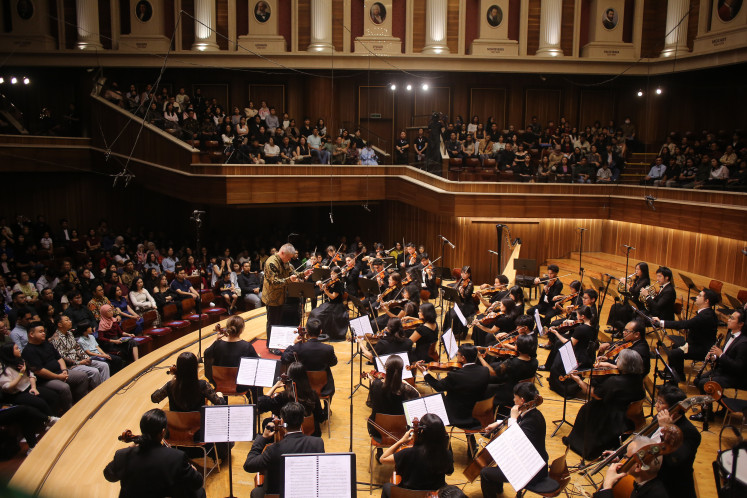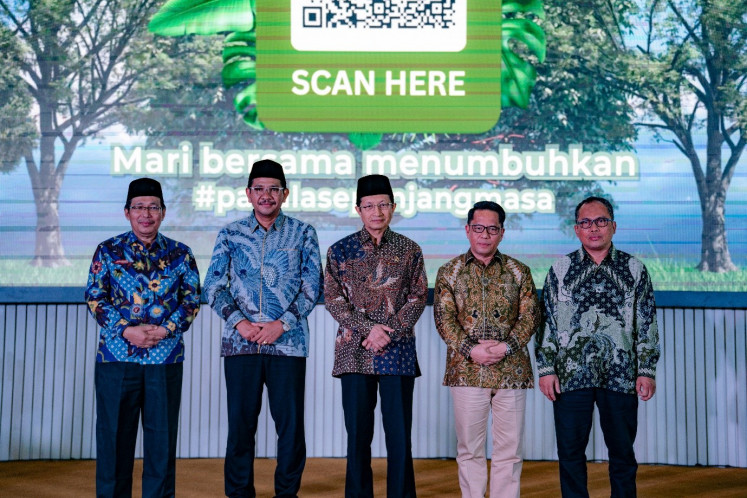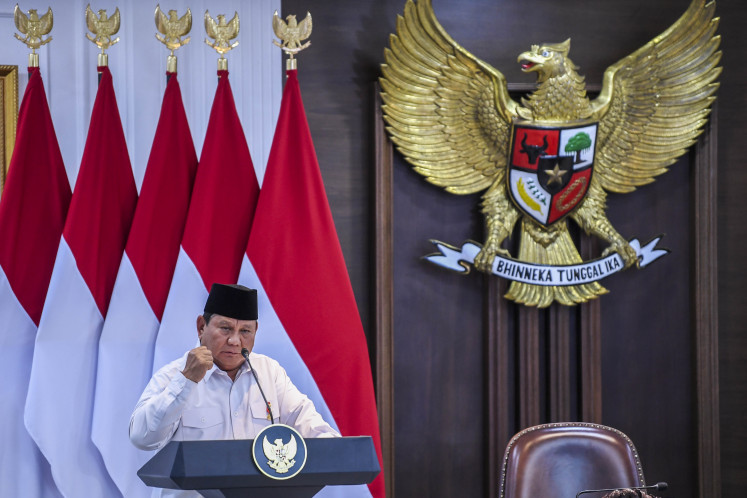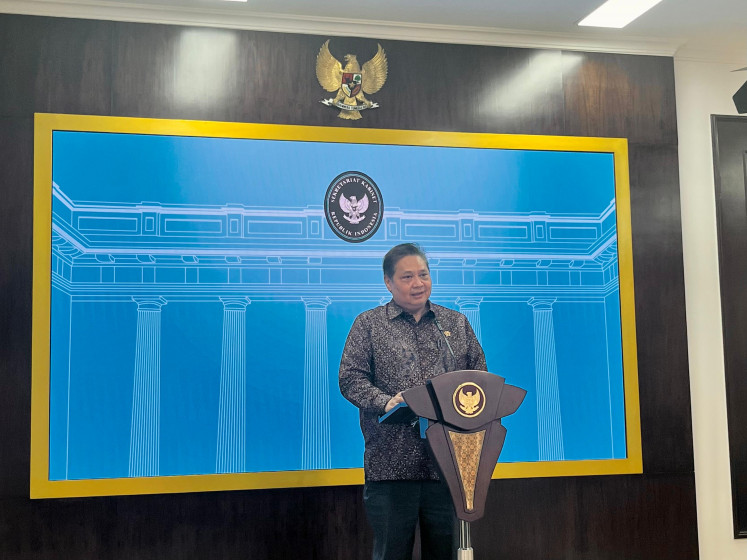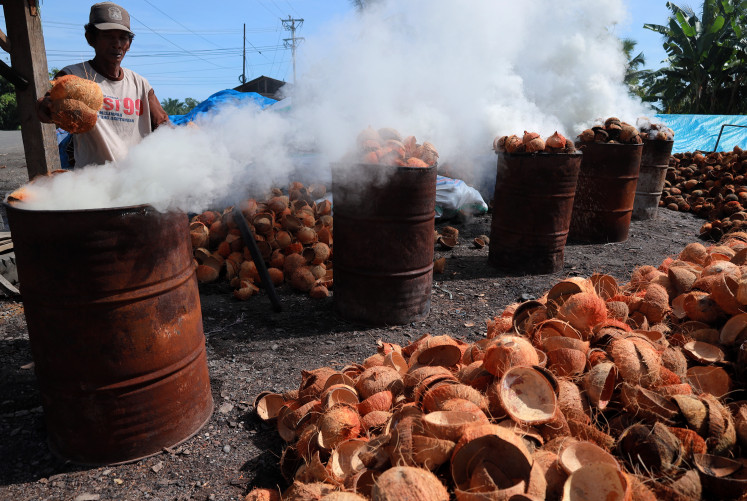Borobudur photo exhibition puts spotlight on 67-year-old conservationist
The exhibition – which ran until April 25 at the Nujiwa Community Gallery in Karanganyar, Magelang – was entitled “Borobodur di Mata Suparno” (“Borobudur in the Eyes of Suparno”) after the temple’s 67-year-old conservationist.
Change text size
Gift Premium Articles
to Anyone
 Suparno, a staff member of the Borobudur Conservation Office who is also a photographer, poses with one of his works at an exhibition entitled 'Borobudur in the Eyes of Suparno' at the Nujiwa Community Gallery in Karanganyar, Magelang, Central Java. (JP/Bambang Muryanto)
Suparno, a staff member of the Borobudur Conservation Office who is also a photographer, poses with one of his works at an exhibition entitled 'Borobudur in the Eyes of Suparno' at the Nujiwa Community Gallery in Karanganyar, Magelang, Central Java. (JP/Bambang Muryanto)
The Borobudur Conservation Office, in collaboration with UNESCO Jakarta, has opened a photo exhibition showcasing the decades-long evolution of the Borobudur temple in Magelang, Central Java.
The exhibition, which ran until April 25 at the Nujiwa Community Gallery in Karanganyar, Magelang, was entitled “Borobodur di Mata Suparno” (“Borobudur in the Eyes of Suparno”) after the temple’s 67-year-old conservationist, Suparno.
Curated by Hairus Salim, Transpiosa Riomandha and Dwi Oblo Prasetyo, the exhibition was held in conjunction with World Heritage Day, which is commemorated every April 18.
Highlights from the exhibition included photos depicting modifications made to the famed Karmawibhangga relief panels, located at the foot of the temple, before and after the restoration.
Suparno’s photographic works document the changes made to the Borobudur temple during a major restoration taking place from 1973 to 1983.
“Photos of the Borobudur temple before the restorations serve as a vital comparison to its present condition,” Suparno said during the exhibition's opening on Tuesday.
“I used to work in the chemical department. I was eventually trained as a photographer to document the temple’s restoration,” he added.
A photographer at that time lacked many of the conveniences available today in the digital era. Suparno and other photographers back then had to be very skillful in lighting techniques and they also had to be very savvy in dealing with film, especially when taking bird's-eye-view photos from a plane.
Suparno's aerial photos of Borobudur were among the essential documents presented when Indonesia requested the temple to be declared a World Heritage Site, which UNESCO did in 1991.
Shahbaz Khan, director of the UNESCO cluster office in Jakarta and Regional Bureau for Science in Asia and the Pacific, said that a photo of Borobudur with a mountain and rice fields at the background reflects the cosmic philosophy of the temple's architecture.
Apart from the photos taken by Suparno, Borobudur was also documented by Kassian Cephas, the first Indonesian photographer to have captured images of the 160-panel Karmawhibhangga relief that was blocked from sight by the temple foundation.
Cephas photographed the Karmawibhangga relief panels when Dutch explorer Theodore van Erp discovered and restored them for the first time from 1907 to 1911.
Read also: Borobudur temple to provide special route for foreign tourists
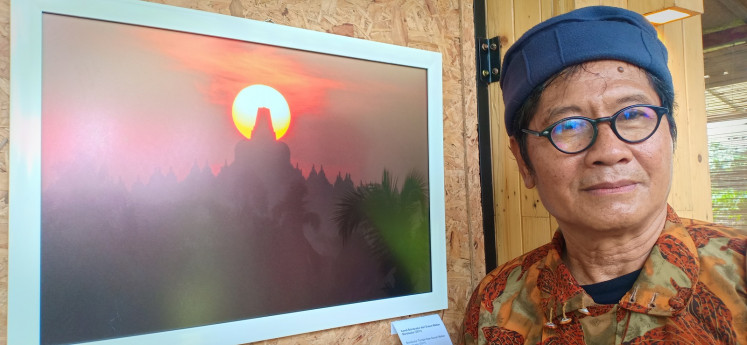
In addition to later photos of the Karmawibhangga relief panels taken by Suparno during the temple's second restoration, visitors may also view photos depicting the construction of Borobudur.
Historic moments taking place at the temple were also captured in the photos, such as Indonesia’s second president Soeharto officiating its public opening in 1983.
Moments of natural beauty, such as a total lunar eclipse seen above one of the temple’s main stupas, was captured by Suparno's lens as well. (rfa/mut)

